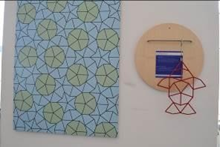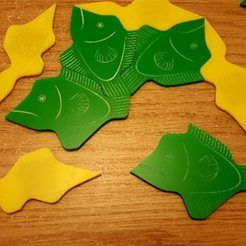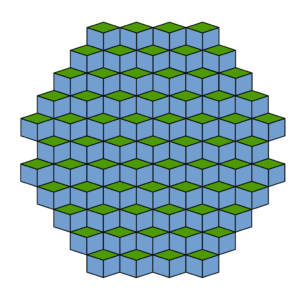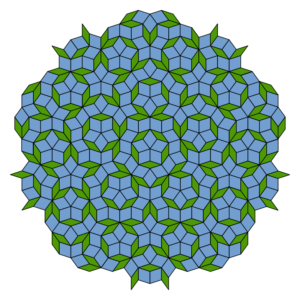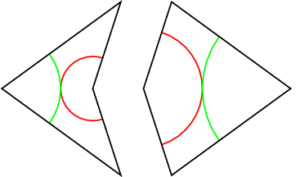Find the Fish – Penrose Fish
Tasks
|
||||||
MathsCovering a flat surface with geometric shapes is called a tiling. For example, a floor might be tiled with squares. We can also use more than one shape, here is a tiling that uses two shapes: The pattern below is made from two geometric shapes, but this time the pattern does not repeat itself – shifting the tiles across never produces the exact same pattern. The poster is an example of the simplest kind of aperiodic tilings, known as Penrose tilings. The Penrose Fish tiles are an example of a different Penrose tiling. Parts of a Penrose tiling have the same symmetry as a pentagon (five-fold rotational symmetry and five mirror lines of reflective symmetry). This only true for finite areas (not the whole infinite tiling), but the finite areas can be quite large. |
||||||
HistoryTilings have been used as decorative art since ancient times, from Islamic art to Roman mosaics. Tilings can be made from one or more shapes, which might be regular or irregular polygons. If the pattern repeats the tiling is called periodic. |
||||||
People |
||||||
ApplicationsAperiodic tilings were only discovered by mathematicians in the 1960s. Since then they have been used as art and as decoration in architecture, including the floor of the department of mathematics at Oxford University and at San Francisco’s transit centre. A quasicrystal is a material with aperiodic structure. Although the mathematics of quasicrystals has been known for some time, the first naturally occuring quasicrystal was found in 2009, it is an alloy of aluminium, copper and iron called icosahedrite. Quasicrystals have unique material properties and applications are being investigated. |
||||||
Maths at HomePrint and cut out these tiles to make a pattern. Here is another set of Wang tiles discovered in 2011. For this set, the patterns will never be periodic. The most famous examples of aperiodic tilings are Penrose tilings. One set uses two tiles, called kite and dart. The idea here is to match the lines, so although it’s tempting, we cannot use the kite and dart to make a rhombus. Download and print your own set of tiles here. This is the set of tiles found on the Find the Fish poster. Another set of Penrose tiles uses a thin rhombus and a fat rhombus. |

